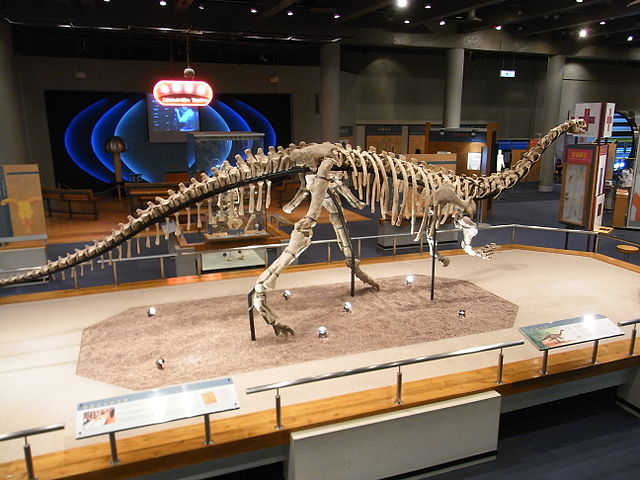
Many dinosaur display pieces are replicas. Museum patrons and students alike may soon get access to a wider range of dinosaur bones thanks to less expensive 3D printed models. Courtesy of Miranorastt.
Latest News
November 22, 2013
Additive manufacturing (AM) has applications that range far beyond the production of parts or goods. The scientific community in particular has taken to the technology, using it for everything from artificial reefs to building geological models. One of the greatest strengths of AM is its flexibility, and researchers around the world have turned to it for just that reason.
Paleontologists are the latest group of scientists to find new ways of leveraging the technology. By combining CT scans and 3D printing, they are capable of reproducing extremely accurate scale models of dinosaur bones without concern for damaging the originals.

Apparently, a commonly used tactic in paleontology is to immerse dinosaur bones in plaster to protect them from damage while being shipped, or when placed in long-term storage. Some bones that are too delicate to suffer regular handling are also preserved in this fashion, set aside for specific future research. Encasing the bones in plaster not only prevents accidental breakage, but also reduces damage caused by natural forces of decay working on ancient finds.
Getting the bones back out of the plaster without damaging them can be tricky. If the plaster happens to stick to a specific area, researchers must take the greatest care to remove the material without damaging the bone beneath. This is one way in which, regardless of how careful someone is, the bones continue to suffer damage while in the hands of researchers.
The solution to this sticky problem comes in the form of 3D printing. By taking data provided by a CT scan, an AM-built model can be produced that is nearly identical to the original bone. This allows scientists to continue their studies without worrying about damaging priceless finds, and gives students a chance to work with the bones as well.
In a few cases, the labels attached to plaster-encased bones have been lost, such as when the Museum für Naturkunde in Berlin took several hits from Allied bombs in WWII. The plaster encasing the relics allowed them to survive, but no one was certain exactly what was inside.
Rather than risk destroying the bones inside the plaster, paleontologists had simply set the unknown bones aside. Using the CT/AM solution, researchers were able to construct models of the interiors of the plaster, rescuing the bones within from languishing in obscurity.
In the future, paleontologists may well combine AM with other non-destructive survey methods. An accurate ground-penetrating system could produce data accurate enough for researchers to build replica models of dinosaur bones without digging them up. Data from a “dig” could then be rapidly transmitted around the globe, increasing the speed of shared discoveries.
Below you’ll find a short video about using 3D printing to teach students about dinosaurs.
Source: LiveScience
Subscribe to our FREE magazine, FREE email newsletters or both!
Latest News
About the Author
John NewmanJohn Newman is a Digital Engineering contributor who focuses on 3D printing. Contact him via [email protected] and read his posts on Rapid Ready Technology.
Follow DE





